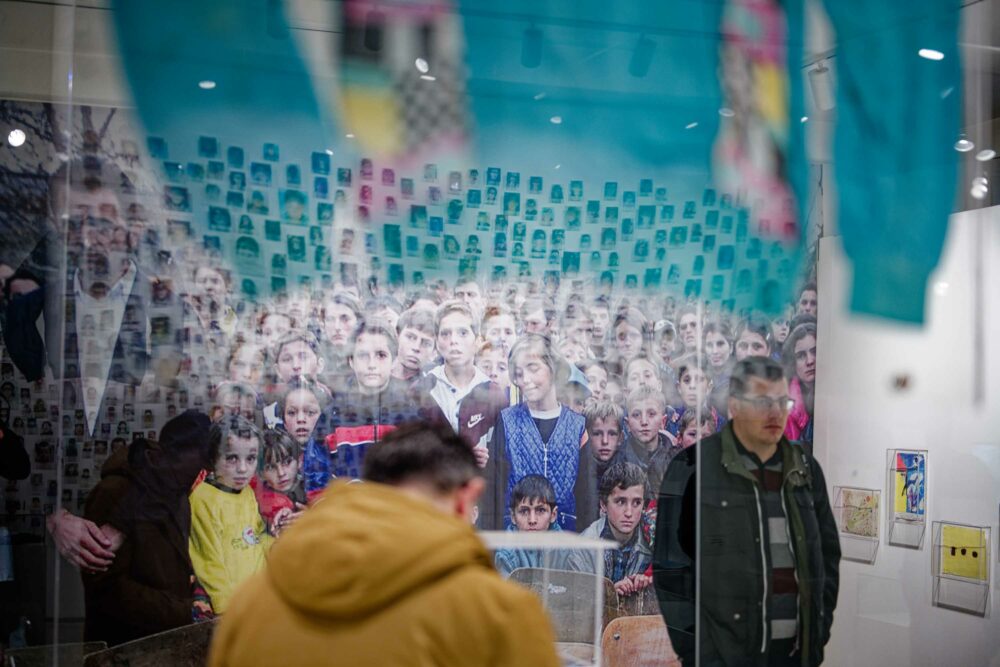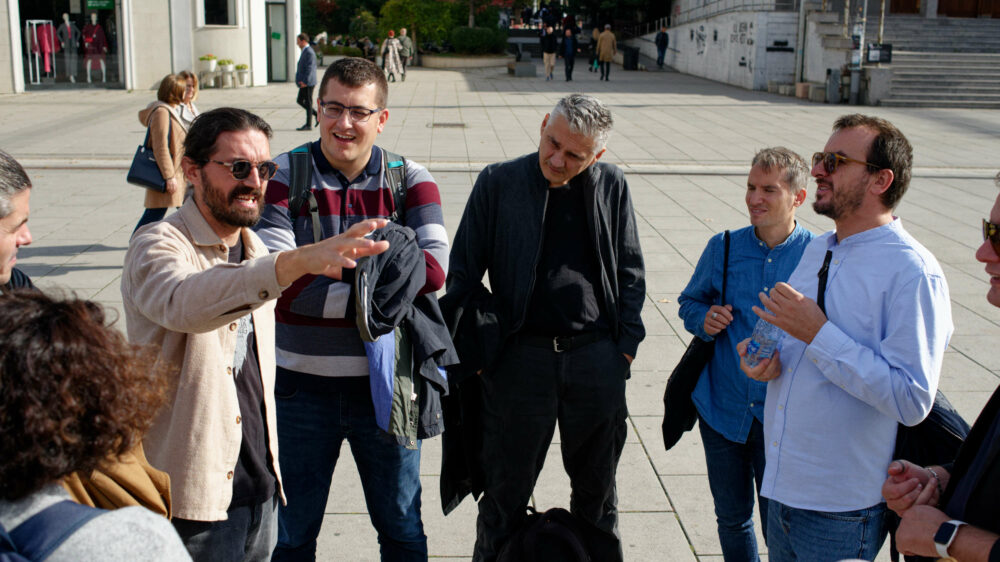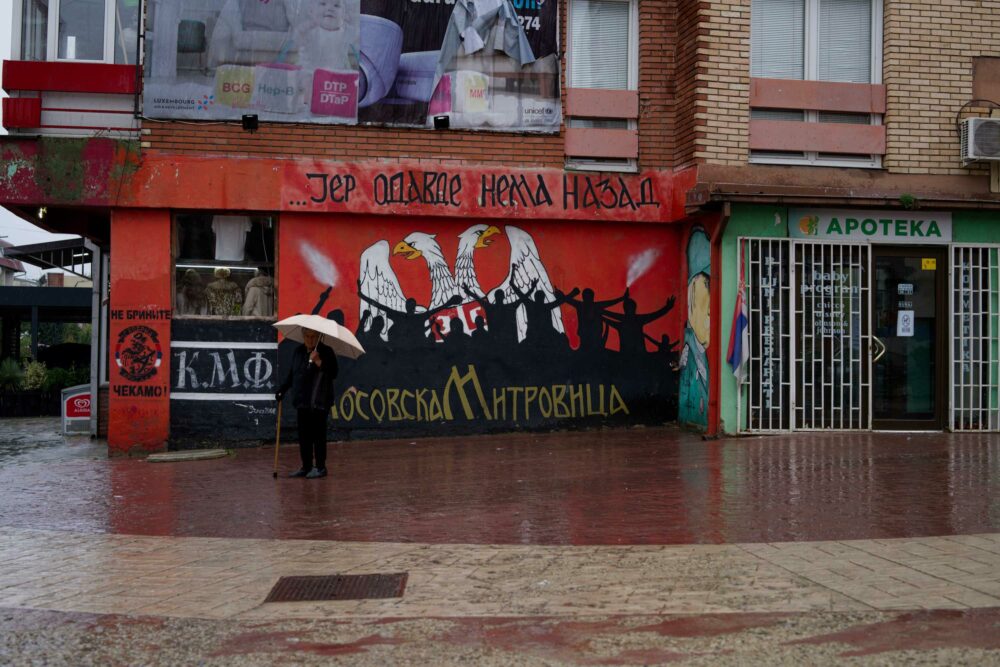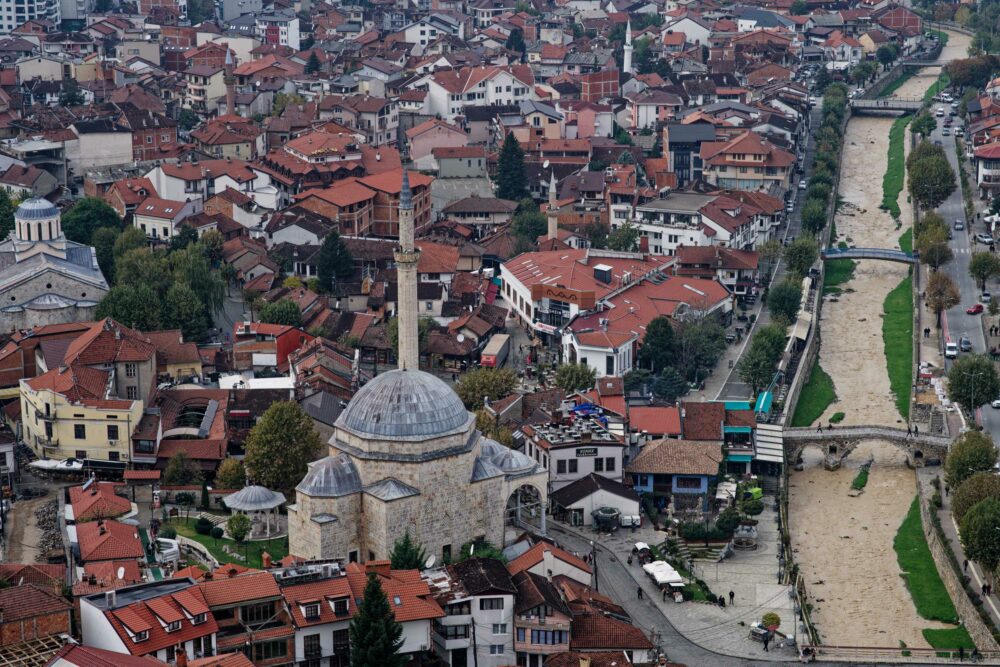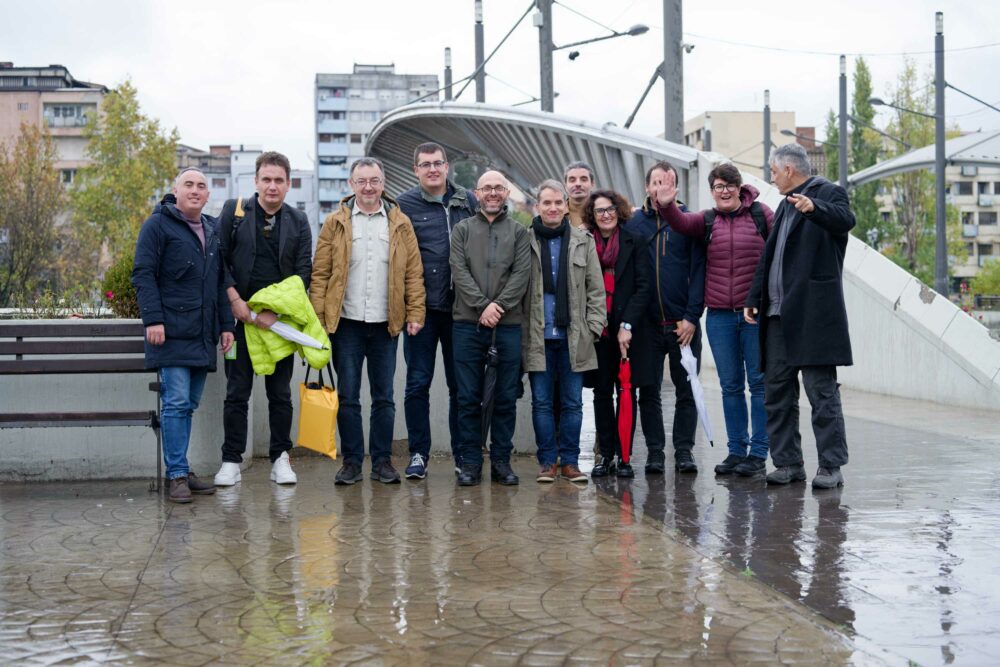The study trip to Kosovo for team members of the Centre for Nonviolent Action Sarajevo – Belgrade and some of our associates was organised from 6 to 10 November 2023.
We wanted to go to Kosovo and meet the people living there and working on peacebuilding and dealing with the past, or on supporting those processes in society. Some of them were people we had already worked with in various ways, but part of our visit included meeting new people. Our main motivation was the need for cross-border cooperation and the absence of visibility for examples that go against the politically proclaimed “centuries-old hatred and opposition between Albanians and Serbs”. Examples of cooperation are rare, often limited to areas considered politically non-controversial (young people, culture, etc.), while interventions in the field of opposed one-sided interpretations of the violent past are rarer still and of limited impact. On the other hand, the absence of political agreement at the highest level creates a state of ceasefire, often marred by violent incidents and incendiary statements by leading political figures. This situation requires a high degree of daring to come out publicly against the homogenised “national defence” front, and these were the individuals and initiatives we were particularly eager to meet.
Part of our team, CNA team members from the Sarajevo office, had never been to Kosovo, so our objective was also to get to know the context, organisations and individuals that we see as peacebuilding actors, and to explore memorialisation after the war.
It was important to get to know their thinking on peacebuilding and the activities that are implemented, but also to talk about CNA’s approaches, especially our peace education programmes and our work with war veterans. We also wanted to see how the war is viewed today in Kosovo – from art exhibitions to memorialisation, which are the dominant memories of war, what do they say, what are they silent about, and do they have anything at all to say to those coming “from the other side”.
Pristina
In Pristina, we first visited the Kosovo Humanitarian Law Center where we met with its director Bekim Blakaj and saw two exhibitions: “New Day” by Barbara Prenka, presenting the artist’s vision of dealing with the past through family photos woven by women on tapestries, and the permanent exhibition “Once Upon a Time and Never Again” dedicated to children killed in the 1998-2000 war. The exhibition uses children’s personal items to point to the irreplaceable loss and eternal pain of their deaths, while also sending a clear message that this should never happen again to anyone. “More than an exhibition, this is a monument dedicated to children who were killed or went missing during the war. Why are monuments built to preserve ruins, the consequences of grave human rights violations?” says the sign at the entrance to this unique exhibition that we recommend everyone should visit.
We spoke about the missing and the difficulties faced by the Missing Persons Resource Centre with Nataša Božilović who told us about the work of the Centre, which is actually a network of organisations, including both Albanian and Serb associations for missing persons, and about how difficult and demanding the work is, because it is constantly dependent on daily politics. We also spoke to her about possibilities for cooperation in peace education, something they have recently started doing with young people.
On the way to Kosovska Mitrovica, we stopped to visit Gazimestan and Muratovo turbe. Although they are not a topic of our work, the mythology surrounding the Battle of Kosovo is deeply imprinted in everything going on today.
Mitrovica
On the north side of Mitrovica, we met with Jelena Cvetanović and Stefan Kalaba from the NGO Casa and talked about the projects they are working on, especially the “Barabar” centre in Pristina, where they work closely with the NGO Integra, and the programmes that are held there, including debates, seminars and exhibitions. “Barabar” is a multiethnic centre in downtown Pristina that aims to promote inter-ethnic dialogue, tolerance, equality and a culture of cooperation, and it is a place for events that share these values. In the southern part of Mitrovica, we were received by Nemanja Nestorović at the NGO CBM, and he spoke to us also about the problems of living in the north and working in the south of the city, divided by a bridge, almost invisibly, but still very much so. Life encourages people to cross the bridge, but events keep shutting it down with invisible boundaries.
We concluded our visit to Mitrovica at KosSev, whose reporters have been holding out against all manner of pressures, including the burning of cars and threats, to report from Kosovo in a timely and truthful manner. From the perspective of KosSev, as presented to us by its director Nevenka Medić, the struggle for media freedom is very hard, but they are not giving up. It was disheartening to hear her view on some cross-border initiatives that boil down to mere formalities, without essentially contributing to overcoming divisions. This is detrimental for all those working in the field because it delegitimises them and potentially places them all in the same boat. A fair external evaluation of the programmes could contribute to resolving this problem and improving existing initiatives, but this tool is not widely used.
Prizren
On the last day of our stay in Kosovo we visited Prizren, a town known as one of the most beautiful places in the former Yugoslavia. Today, Prizren is still a very pretty town, though filled with militarised monuments. The fortress overlooking the town bears a sign saying UÇK (KLA – Kosovo Liberation Army). We visited the Serbian Orthodox Seminary that was burnt down in March 2004 and reconstructed in 2011. It is now home to some 50 students and teachers, while the whole of the rest of Prizren is home to another dozen or so Serbs. Although we had not announced our visit in advance, we were received and briefly spoke with Father Isidor. We asked him about how the students of the Seminary live in Prizren, whether they have contacts with their peers in the town, how they spend their free time. His answers were not encouraging. There are invisible but hard borders between young people, and the myth of Prizren as a centre of diversity in the former Yugoslavia, which made it so beautiful, has fallen apart.
In Landovica near Prizren, there used to be a memorial complex dedicated to Boro and Ramiz, partisans who were executed there together. Today, this is the site of a memorial centre dedicated to Kosovo Liberation Army members, and not just those killed in the war, but also those who died previously.
On our return to Pristina, we stopped in Gračanica where we visited the church and met with Marijana Toma, a historian and expert for dealing with the past, who now lives and works in Kosovo. It was important for us to get her perspective on living in Kosovo, and her insights into what needs to be done were very useful, especially when it comes to minority communities – Roma, Turkish, Bosniak, Ashkali, and those of other minorities that are often neglected.
People in Kosovo live between status and recognition, equally on the Albanian and the Serb political side, they are discouraged from crossing demarcation lines. Life under constant pressure, clashes and uncertainty has gone on for decades and is demoralising for actions that would lead to genuine changes. Backtracking after all the efforts invested by numerous organisations is a daily occurrence. Further discouragement comes from the fact that everyone is tired of living in fear and uncertainty. They hope for a better life staring on 1 January 2024, when the visa regime with EU countries will be lifted, but the life they hope for is in some other place in Europe.
The study trip was useful as a way to meet many of the participants from our Basic, Mir-Paqe-Мир trainings, the Biber multilingual short story contest centring on the theme of reconciliation, and to discuss how we could connect and engage more, how we could support each other and what we could work on in the future. It would be valuable if activists from Kosovo and Bosnia and Herzegovina could visit each other and exchange experiences. Currently, this is made very difficult by the visa regime that restricts movement, as described by Nedžad Novalić, a member of the CNA team, in his text “SO CLOSE, YET SO FAR AWAY: On the severed ties between BiH and Kosovo”.
We would like to thank Luan Imeri from Skopje and Qerim Ondozi from Pristina for their exceptional effort in organising this study trip. We were very happy to meet dear friends: Nexhat, Gazmend, Fatime, Emine, Šehida, Besnik, Lulzim, Amina, Mimoza, Sibel, Shenaj – thank you all for the wonderful discussions and the support you have been providing to us.
The photo gallery can be viewed HERE
